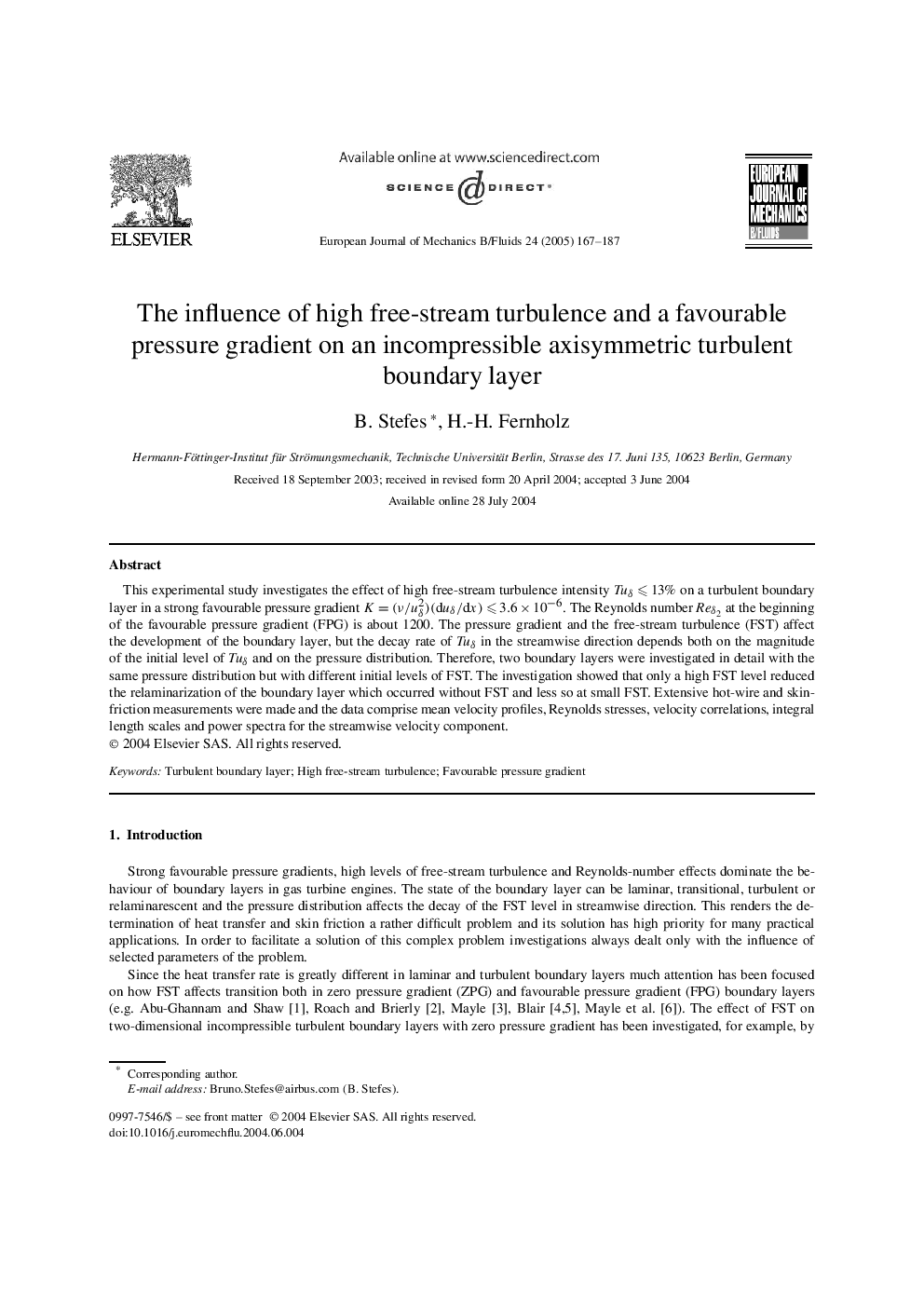| Article ID | Journal | Published Year | Pages | File Type |
|---|---|---|---|---|
| 9690608 | European Journal of Mechanics - B/Fluids | 2005 | 21 Pages |
Abstract
This experimental study investigates the effect of high free-stream turbulence intensity Tuδ⩽13% on a turbulent boundary layer in a strong favourable pressure gradient K=(ν/uδ2)(duδ/dx)⩽3.6Ã10â6. The Reynolds number Reδ2 at the beginning of the favourable pressure gradient (FPG) is about 1200. The pressure gradient and the free-stream turbulence (FST) affect the development of the boundary layer, but the decay rate of Tuδ in the streamwise direction depends both on the magnitude of the initial level of Tuδ and on the pressure distribution. Therefore, two boundary layers were investigated in detail with the same pressure distribution but with different initial levels of FST. The investigation showed that only a high FST level reduced the relaminarization of the boundary layer which occurred without FST and less so at small FST. Extensive hot-wire and skin-friction measurements were made and the data comprise mean velocity profiles, Reynolds stresses, velocity correlations, integral length scales and power spectra for the streamwise velocity component.
Keywords
Related Topics
Physical Sciences and Engineering
Chemical Engineering
Fluid Flow and Transfer Processes
Authors
B. Stefes, H.-H. Fernholz,
